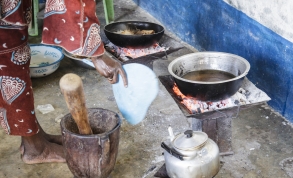Abstract
Shenyang City played a central role in the industrialisation of China in the 1950s and 1960s and is considered one of the most heavily polluted cities in China. Local policy measures, in addition to existing national policies, aimed to control air pollutants and reduce energy consumption. Between 2008 and 2010, Shenyang also removed heavy industry from its core, providing opportunities for green redevelopment.
Intervention overview
The Tiexi District of Shenyang City is regarded as an industrial base in China, where over 60% of air pollutants and CO2 are emitted by industries, mainly from coal-fired energy consumption. The city played a central role in the industrialisation of China in the 1950s and 1960s and is considered one of the most heavily polluted cities in China.
Between 2005 and 2009, the government in the Tiexi District implemented local policy measures, in addition to existing established national policies, to control air pollutants and reduce energy consumption. These included the relocation or closure of industry with high pollution and high energy consumption, energy efficiency improvement measures such as centralisation of heating systems, geothermal heating systems for households, and the removal of small heating boilers, and carbon offsetting with tree planting and development of urban greenbelts.
Outcomes
Between 2005 and 2009, the policy measures reduced approximately 24,100 tons in CO2 and led to a reduction in 7,900 tons of NOx, 40,600 tons of PM10, and 33,260 tons of SO2.
Feasibility and potential impact of scale-up
The changes achieved in the Tiexi district in Shenyang are part of a wider initiative by the city to remove heavy industry and develop a greener city through actions across several sectors (The Urban Sustainability Index: A New Tool for Measuring China’s Cities, 2010). Between 2008 and 2010, Shenyang removed heavy industry from its core, leaving abandoned land or brownfield sites (land once used for industry that is not currently in use). These sites provide opportunities for urban planners for redevelopment. Shenyang offers a good example of successful "brownfield redevelopment". Heavy industries began leaving the Tiexi District in 2003, facilitated by tightened industrial and zoning regulations. In the years after that the city redeveloped the district, which improved the city’s urban image and drove economic development via real estate investment.
Other actions in Shenyang included raising electricity tariffs for industry generally and specifically targeting high-polluting sectors like the Shenyang Cement Plant. A water re-use project was also launched, which allowed water from industrial cooling to be sold at a low price to the city and reused for car washing, urban greening, and street cleaning. By the end of 2006, municipal use of treated wastewater reached 50 million tons/day, with the water reuse rate at 30%. Shenyang also made efforts to enhance public transit in the city, contracting with owner-operators and transport companies to supplement the services provided by the municipal public transport company, as well as establishing regulation to prioritise buses on the roads. The city also took efforts to extract methane from one of its garbage sites, Laohuchong, with its annual energy output providing electricity for more than 35,000 residents in the city. District heating was consolidated into a central plant, which uses energy generated from underground water as electricity to help power the plant. The effects of this action alone removed 3.4 million tons of coal, 80 million tons of SO2, and 150 million tons of industrial dust in Shenyang.
A city-wide transition to sustainability, such as in this case, requires large commitment and investment from local government as well as coordination among city agencies and other bodies. In addition, projects should be evaluated and pass through an approval process to ensure they meet required standards.
References
Academic profile / relevant organisation’s page
- Jiang, P., Chen, Y., Geng, Y., Dong, W., Xue, B., Xu, B., & Li, W. (2013). Analysis of the co-benefits of climate change mitigation and air pollution reduction in China. Journal of Cleaner Production, 58, 130-137.
Supplementary information
- Larson, C. (2011, October 17). How a smoggy Chinese city turned green. The Guardian. Available online: https://www.theguardian.com/environment/2011/oct/17/smoggy-chinese-city…
- Xiao, G., Xue, L., & Woetzel, J. (2010). The Urban Sustainability Index: A new tool for measuring China’s cities. The Urban China Initiative. Available online: https://urbanchinainitiative.typepad.com/files/usi.pdf



